Gaboon vipers are venomous snakes native to Africa. They are the largest African viper species, and as an added bonus, the also have the longest fangs! They use those two-inch fangs to inject enough venom to kill a slew of adult men. Thankfully, gaboon vipers do not bite humans very frequently. Read on to learn about the gaboon viper.
Description of the Gaboon Viper
These snakes are quite large, and average between 4 and 5 feet long. However, the largest specimen ever recorded was nearly 7 ft. long! Their coloration is perfectly adapted for rainforest living. They have light colored scales, with dark brown patches that closely resemble fallen leaves.
Another way to distinguish these snakes is their large, flat, triangular heads. They also have two small “horns” set in between their nostrils, though I wouldn’t observe them that closely if you suspect you have crossed paths with a gaboon viper!
Interesting Facts About the Gaboon Viper
Though intimidating, and rightfully so, these snakes are not ruthless killing machines. In fact, bites from gaboon vipers are quite rare. Learn more about why we should respect these snakes rather than fear them.
- Sneak Attack – These snakes are ambush predators. That means they use their camouflage to blend in with their environment, and wait for prey to pass close enough to strike. Though it seems surprising that a five-foot snake could go undetected, once curled up and lying still, the snakes are virtually undetectable!
- Lazybones – Unfortunately, their camouflage is also the primary reason they end up biting people! While waiting for prey to pass by, gaboon vipers couldn’t care less about the passing human, as they are much too large to eat. However, they do not appreciate the occasional human stepping on them, and are too lazy to move out of the way. Most bites occur when someone accidentally steps on the snake, and even then they don’t always bite!
- Venom Toxicity – When a bite does occur, it can be seriously life threatening. Oddly enough, the venom itself is not particularly toxic. However, these snakes have massive venom glands, and inject an immense amount of venom when they do bite. This is why gaboon viper bites, though rare, can be very deadly.
- Docile Nature – Perhaps the biggest reason that gaboon viper bites are so rare is simply because the snakes are not very aggressive. Obviously handling or coming in contact with any venomous snake is highly dangerous, but these snakes are much less likely to bite than some other venomous species.
Habitat of the Gaboon Viper
These snakes have a relatively small range of habitats that they prefer, and within these habitats they thrive. Most gaboon vipers reside in the rainforest, or surrounding woodlands, where they most often remain in low altitudes rather than mountainous regions. In some areas they also roam through agricultural areas and plantations. These snakes also occasionally take advantage of the warmth of roads at night.
Distribution of the Gaboon Viper
Gaboon vipers live throughout central Africa and in small pockets of western Africa. Their range is concurrent with rainforest growth. They also thrive in Guinea, West Africa, Ghana, South Africa, Togo, Mozambique, Nigeria, Zimbabwe, Cameroon, Malawi, Gabon, Zambia, Tanzania, the Congo, Uganda, Central African Republic, and South Sudan.
Diet of the Gaboon Viper
These snakes are carnivores, and feed on a variety of birds and mammals. Some common prey includes rabbits, mice, rats, and a variety of birds. There are also reports of these snakes preying on some odd creatures, like porcupines and small royal antelopes. As ambush predators, they lie quietly and wait for prey to pass by them, relying on their camouflage to keep them hidden.
Gaboon Viper and Human Interaction
It is actually quite rare for gaboon vipers to interact with humans. They live in dense rainforests that are difficult to travel through, and tend to avoid densely populated areas. In addition, bites rarely occur because the snakes are not particularly aggressive. Because of this, humans rarely kill them, and their population remains stable.
Domestication
Humans have not domesticated gaboon vipers in any way.
Does the Gaboon Viper Make a Good Pet
No, gaboon vipers are not good pets. In fact, owning any venomous snake is a bad idea. These snakes, though fairly unaggressive, can be extremely dangerous if they do bite. If bitten, you could die.
Gaboon Viper Care
In a zoological setting, keepers must take extreme care when handling or interacting with this animal. They are venomous, and zoos ensure their enclosures are well secured and locked to prevent accidents or escapes.
Because they are such large snakes, they do require a somewhat extensive habitat. However, they are not particularly active, so the enclosure doesn’t have to be quite as large as a similarly sized, active, snake might need. They can eat a diet of rats, mice, rabbits, and chicks.
Behavior of the Gaboon Viper
These reptiles are notoriously docile, and even lazy. They are not quick to aggression, and prefer hiding in the leaf litter to actively moving about. Gaboon vipers are mostly active at night, or nocturnal. Most individuals are slow moving, and when they do actively search for food they do so slowly. However, when they feel threatened, they will hiss and flatten their heads.
Reproduction of the Gaboon Viper
During the breeding season, male gaboon vipers participate in extended battles. They wrestle, sometimes for hours on end. Any striking occurs with the mouth closed in these fights. These fights occur until one snake is able to pin the other to the ground by its head, and raise its own head off the ground.
The winner gets breeding rights to the females. After mating, the female has an incubation period of seven months. She will give birth to live young, and clutches can contain several dozen babies.





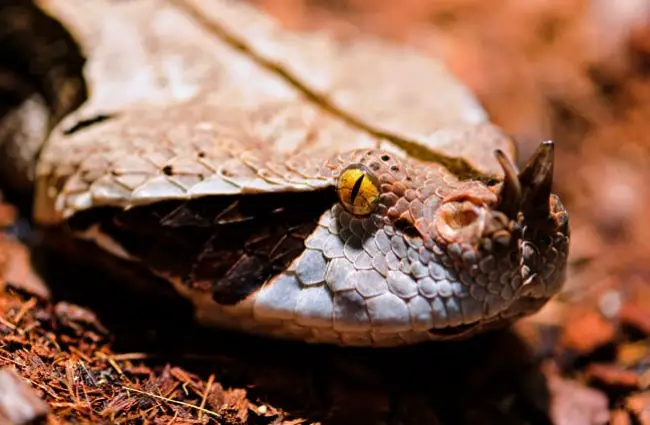
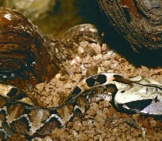
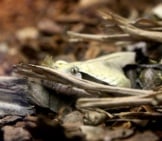
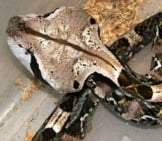
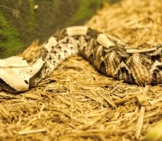
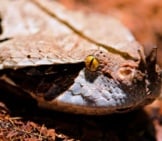
![Red Angus Closeup of a beautiful Red Angus cowPhoto by: U.S. Department of Agriculture [pubic domain]https://creativecommons.org/licenses/by/2.0/](https://animals.net/wp-content/uploads/2020/03/Red-Angus-4-238x178.jpg)


![Red Angus Closeup of a beautiful Red Angus cowPhoto by: U.S. Department of Agriculture [pubic domain]https://creativecommons.org/licenses/by/2.0/](https://animals.net/wp-content/uploads/2020/03/Red-Angus-4-100x75.jpg)

